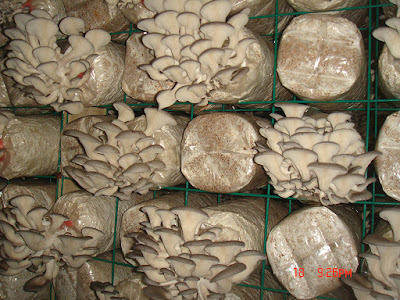Sometimes
you may not be in a mood to step out of your home to get mushrooms and would
like to have them at your own backyard. Cultivating mushrooms at your home is a
great idea because you will not only get fresh mushrooms but also feel great
about your homegrown success. Log cultivated mushrooms at home have superior
taste alongside texture and appearance than the ones that are available
commercially.
Preparing
the mushroom log is one of the most important things you should consider in the
beginning. But, one needs to have knowledge about growing the substrates and
put in efforts. However, you can also buy Mushroom Logs from one of the
reputed suppliers. In that case, you should
keep certain things in mind before buying them.
Choosing the oak species: When you plan to buy
Mushroom Logs it is important that you choose oak wood belonging to the white
oak group. It is the most preferred species as they decompose slowly providing
food for several years to the fungi. Consequently, they offer a longer harvest
period. The logs are kept in production for three seasons providing them with
ideal conditions. After three seasons, it provides an average yield of 1.5 lbs
of mushrooms per log yearly. Other hardwoods that can be used are birch, beech,
hickory, and cherry but they have a shorter productive life span compared to
oak.
Using freshly cut log: Make sure the log to be
used for growing mushrooms are cut from living trees during winter or early
spring when the daytime temperature is warm but it is cold at night. At this
time, the sap of the tree begins to move upwards which remains stored in the
roots during winters. In addition, a freshly cut log has high moisture content
which aids the development of mycelium. It is a long-lasting source of food as
they have not yet started to decompose.
Prevent unwanted fungus: Make
sure that the substrate to be used for growing mushrooms is not vulnerable to
colonization by a fungus of other species which are unwanted. When unwanted
fungus gets the right conditions, it competes with the mushrooms. A log which is
prepared from green wood or freshly cut trees is not already colonized by other
fungi.
Size of logs: Before buying the
substrates, one should consider the size so that it is easy to handle. Growers
mostly prefer harvesting logs that range from 3 inches to 6 inches in diameter
and 3 to 4 ft long. Substrates that are larger than this becomes very heavy
when they are soaked in water to induce fruiting making them difficult to
maintain and transport.
Choosing the supplier: A good quality log can boost
the production of mushrooms. If you choose to get it from a supplier, you need
to ensure that they are specialized in manufacturing high-quality safety mushroom
substrates. In addition, an experienced supplier implements the most innovative
and hygienic techniques and has the capability to meet your expectations.
Once
you have got the substrates, this will enable you to grow mushrooms for several
consecutive years.















